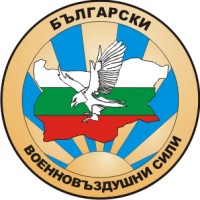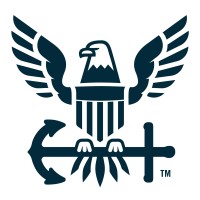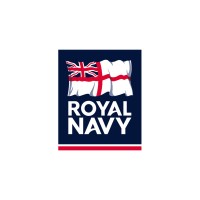
Bulgarian Air Force Company Cyber Security Posture
mod.bgВВС са основен вид въоръжени сили, предназначени за участие в съвместни и самостоятелни операции, както в национален, така и в многонационален формат. ВВС гарантират въздушния суверенитет на Република България, като осъществяват наблюдение, охрана и отбрана на нейното въздушно пространство, изпълняват задачи по защита на критична инфраструктура и стратегически обекти на територията на страната. Това се осъществява в колективната система за сигурност и отбрана, като се поддържат способности за участие в изпълнението на мисиите и задачите на въоръжените сили. ВВС поддържат постоянна готовност, водят подготовка, осъществяват контрол за спазване режима на въздухоплаването и осигуряват неприкосновеността на въздушното пространство на страната в интегрираната система за противовъздушна отбрана на НАТО. ВВС изпълняват задачи по оказване помощ на държавната и местната власт по подготовка, поддръжка и защита на населението, националното стопанство и територията на страната за реагиране при кризи и преодоляване на последствията от тях, помощ на други министерства и ведомства за гасене на пожари, наблюдение от въздуха, въздушен транспорт на личен състав и товари. ВВС поддържат способности за планиране и участие в самостоятелни и съвместни операции.
BAF Company Details
bulgarian-air-force
10,001+ employees
560
928
Armed Forces
mod.bg
Scan still pending
BUL_4747841
In-progress
Between 800 and 900
This score is AI-generated and less favored by cyber insurers, who prefer the TPRM score.
 BAF Global Score
BAF Global Score.png)

Bulgarian Air Force Company Scoring based on AI Models
| Model Name | Date | Description | Current Score Difference | Score |
|---|---|---|---|---|
| AVERAGE-Industry | 03-12-2025 | This score represents the average cybersecurity rating of companies already scanned within the same industry. It provides a benchmark to compare an individual company's security posture against its industry peers. | N/A | Between 800 and 900 |
Bulgarian Air Force Company Cyber Security News & History
| Entity | Type | Severity | Impact | Seen | Url ID | Details | View |
|---|
Bulgarian Air Force Company Subsidiaries

ВВС са основен вид въоръжени сили, предназначени за участие в съвместни и самостоятелни операции, както в национален, така и в многонационален формат. ВВС гарантират въздушния суверенитет на Република България, като осъществяват наблюдение, охрана и отбрана на нейното въздушно пространство, изпълняват задачи по защита на критична инфраструктура и стратегически обекти на територията на страната. Това се осъществява в колективната система за сигурност и отбрана, като се поддържат способности за участие в изпълнението на мисиите и задачите на въоръжените сили. ВВС поддържат постоянна готовност, водят подготовка, осъществяват контрол за спазване режима на въздухоплаването и осигуряват неприкосновеността на въздушното пространство на страната в интегрираната система за противовъздушна отбрана на НАТО. ВВС изпълняват задачи по оказване помощ на държавната и местната власт по подготовка, поддръжка и защита на населението, националното стопанство и територията на страната за реагиране при кризи и преодоляване на последствията от тях, помощ на други министерства и ведомства за гасене на пожари, наблюдение от въздуха, въздушен транспорт на личен състав и товари. ВВС поддържат способности за планиране и участие в самостоятелни и съвместни операции.
Access Data Using Our API

Get company history
.png)
BAF Cyber Security News
Bulgaria’s second F-16 Block 70 aircraft arrives at Graf Ignatievo
The Bulgarian Ministry of Defence received the second F-16 Block 70 aircraft, built by Lockheed Martin, at Graf Ignatievo village.
Bulgaria welcomes second F-16 Block 70 jet to boost Air Force
The F-16 Block 70 represents a leap forward for Bulgaria's Air Force, which has long relied on Soviet-era MiG-29s. Designed by Lockheed Martin, ...
How Bulgaria is Looking to Modernize its Air Force
Bulgaria is now the second European nation and NATO member to receive the F-16 Block 70, followed by Slovakia, which received the first ...
MPs in Sofia suspect sabotage of first Bulgarian F-16
A technical malfunction in Bulgaria's newly delivered F-16 Block 70 fighter jet has sparked political tremors in Sofia, fuelling allegations of sabotage.
Contracts for September 30, 2024
The contract, to be performed worldwide, is for a period of one year beginning Oct. 1, 2024, based on the availability of funds clause at ...
Turkey eyes F-35 return: NATO summit reveals new U.S. deal
– Turkey resumes talks with U.S. to rejoin F-35 program at NATO summit. – S-400 tensions linger, raising cybersecurity concerns for stealth jet.
Bulgarian Air Force receives first F-16 Block 70 fighter jet
The Bulgarian Air Force has officially received its first Lockheed Martin F-16 Block 70 Fighting Falcon combat aircraft into service .
A malfunctioning American F-16 provoked a political scandal in Bulgaria
Parliament calls for investigation into "potential sabotage" of aircraft integration into Bulgarian Air Force.
What to Look Out for During Cybersecurity Awareness Month
Cybersecurity is highly important to the Air Force and Space Force as they continue to designate October as “Cybersecurity Awareness Month.” The ...

BAF Similar Companies

US Navy
The United States is a maritime nation, and the U.S. Navy protects America at sea. Alongside our allies and partners, we defend freedom, preserve economic prosperity, and keep the seas open and free. Our nation is engaged in long-term competition. To defend American interests around the globe, the U

Swedish Armed Forces
The Swedish Armed Forces is one of the biggest authorities in Sweden and is headed by a Supreme Commander. The deputy leader of the authority is the Director General. As the only authority permitted to engage in armed combat, the Swedish Armed Forces are Sweden’s ultimate security policy resource

Royal Air Force (RAF)
Today’s RAF is the UK’s aerial, peacekeeping and fighting force. It’s made up of full-time Regulars and spare-time Reserves who come from diverse backgrounds and work side-by-side to make a difference at home and abroad. When it comes to recruitment our focus is attracting the best personnel and ens

United States Army Reserve
The U.S. Army Reserve's mission, under Title 10 of the U.S. code, is to provide trained and ready Soldiers and units with the critical combat service support and combat support capabilities necessary to support nation strategy during peacetime, contingencies and war. The Army Reserve is a key elemen

Royal Navy
At sea, on land and in the air. The Royal Navy is made up of five arms. The might of ships in the Surface Fleet, the aerial strength that is the Fleet Air Arm, the covert Submarine Service, the elite and amphibious Royal Marines, and the civilian fleet central to our effectiveness, the Royal Fleet

Army National Guard
Welcome to the Army National Guard's page on LinkedIn. The Army National Guard, also known as the National Guard, is one component of The Army (which consists of the Active Army, the Army National Guard, and the Army Reserve). National Guard Soldiers serve both community and country. Our versatili

Frequently Asked Questions
Explore insights on cybersecurity incidents, risk posture, and Rankiteo's assessments.
BAF CyberSecurity History Information
How many cyber incidents has BAF faced?
Total Incidents: According to Rankiteo, BAF has faced 0 incidents in the past.
What types of cybersecurity incidents have occurred at BAF?
Incident Types: The types of cybersecurity incidents that have occurred include .
Incident Details
What are the most common types of attacks the company has faced?
Additional Questions
What Do We Measure?
















Every week, Rankiteo analyzes billions of signals to give organizations a sharper, faster view of emerging risks. With deeper, more actionable intelligence at their fingertips, security teams can outpace threat actors, respond instantly to Zero-Day attacks, and dramatically shrink their risk exposure window.
These are some of the factors we use to calculate the overall score:
Identify exposed access points, detect misconfigured SSL certificates, and uncover vulnerabilities across the network infrastructure.
Gain visibility into the software components used within an organization to detect vulnerabilities, manage risk, and ensure supply chain security.
Monitor and manage all IT assets and their configurations to ensure accurate, real-time visibility across the company's technology environment.
Leverage real-time insights on active threats, malware campaigns, and emerging vulnerabilities to proactively defend against evolving cyberattacks.




